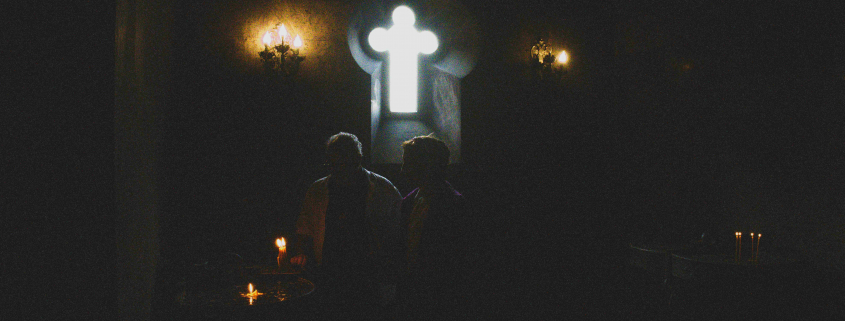Holy God, Crucified
Armodoxy for Today: Holy God, Crucified
A hymn of the Armenian Church, may sound familiar when heard in many traditional churches, such as the Roman Catholic or the Eastern Orthodox.
Holy God, Holy and Mighty, Holy and Immortal, have mercy upon us. Repeated three times, it proceed the reading of the Gospel.
In the Armenian Church, there is a small addition to the words of the hymn, which points to a very big and significant difference in our understanding of Christ. “Holy God, Holy and Mighty, Holy and Immortal, who rose from the dead. Have mercy upon us.” Սուրբ Աստուած, Սուրբ և Հզոր, Սոււբ և Անմահ որ յարեար ի մեռելոց, Ողորմեա մեզ…
This phrase, who rose from the dead, refers to the second person of the Holy Trinity, Jesus Christ. “Who rose from the dead for us.” It changes according to the annual calendar of the Church. For instance, on Christmas the words change to, “Who was born and revealed for us.” And for the Feast of the Holy Cross, the words flow, “Who was crucified for us.” What is revealed here is that for the Armenian Church, Jesus Christ is true God. God is revealed to us. God is resurrected. And, therefore, God is crucified for us.
It is a subtle difference, but an important one. The notion of a “suffering God” is a theological position that also presents a theodicy, an answer to the Problem of Evil. God suffers at the hands of His creation. In other words, evil and suffering are not from God, but a natural consequence of our freewill.
On the streets of Artsakh today, the Azeri government and its people are torturing the Armenian people, by withholding food and medical supplies. By creating situations where they can attack and execute a plan of genocide against the Armenian population, they follow the same plan of the Pharisees, of fabricating lies about Jesus to promote their agenda. Where is God in all of this? He’s on the Cross. He’s with us. He weeps with us, as he witnesses his created human being, opting for death over life, opting for war over peace. St. Nersess Shnorhali, in an epic prayer/hymn called “Aysor Anjar” poetically describes that the same Hands that once took the earth and created humankind, was now being tortured, nailed to the Cross by His creation.
A suffering God is the reason why Armodoxy is always relevant. It demands that we seek solutions from within – amongst ourselves.
Furthermore, God on the Cross emphasizes the extent of His Love for us. For this reason, the cross is the ultimate symbol of love in the Armenian Church. It was not merely a character in history who climbed the Cross, but it was the Creator of History, who was Crucified, Buried and then Resurrected from the dead.
Within the entire hymn, Holy God, Holy and Mighty, Holy and Immortal, who was Crucified for us, have mercy upon us, we note the juxtaposing of the words, Holy, Mighty, Immortal, next to the suffering and victorious God that we celebrate. It truly is a special hymn that finds a special reverberance when sung around the time of the Feast of the Cross because we repeat that God’s actions, His salvific actions, are His gift to us through Jesus Christ.
Our concluding meditation today comes from St. Paul’s second letter to the Corinthians (5:16-21): Therefore, from now on, we regard no one according to the flesh. Even though we have known Christ according to the flesh, yet now we know Him thus no longer. Therefore, if anyone is in Christ, he is a new creation; old things have passed away; behold, all things have become new. Now all things are of God, who has reconciled us to Himself through Jesus Christ, and has given us the ministry of reconciliation, that is, that God was in Christ reconciling the world to Himself, not imputing their trespasses to them, and has committed to us the word of reconciliation. Now then, we are ambassadors for Christ, as though God were pleading through us: we implore you on Christ’s behalf, be reconciled to God. For He made Him who knew no sin to be sin for us, that we might become the righteousness of God in Him.
Cover photo: Gregory Beylerian, Armenia 2023

 2023 Gregory Beylerian
2023 Gregory Beylerian

 2025 Fr Vazken
2025 Fr Vazken





 2014 Fr. Vazken
2014 Fr. Vazken
Leave a Reply
Want to join the discussion?Feel free to contribute!